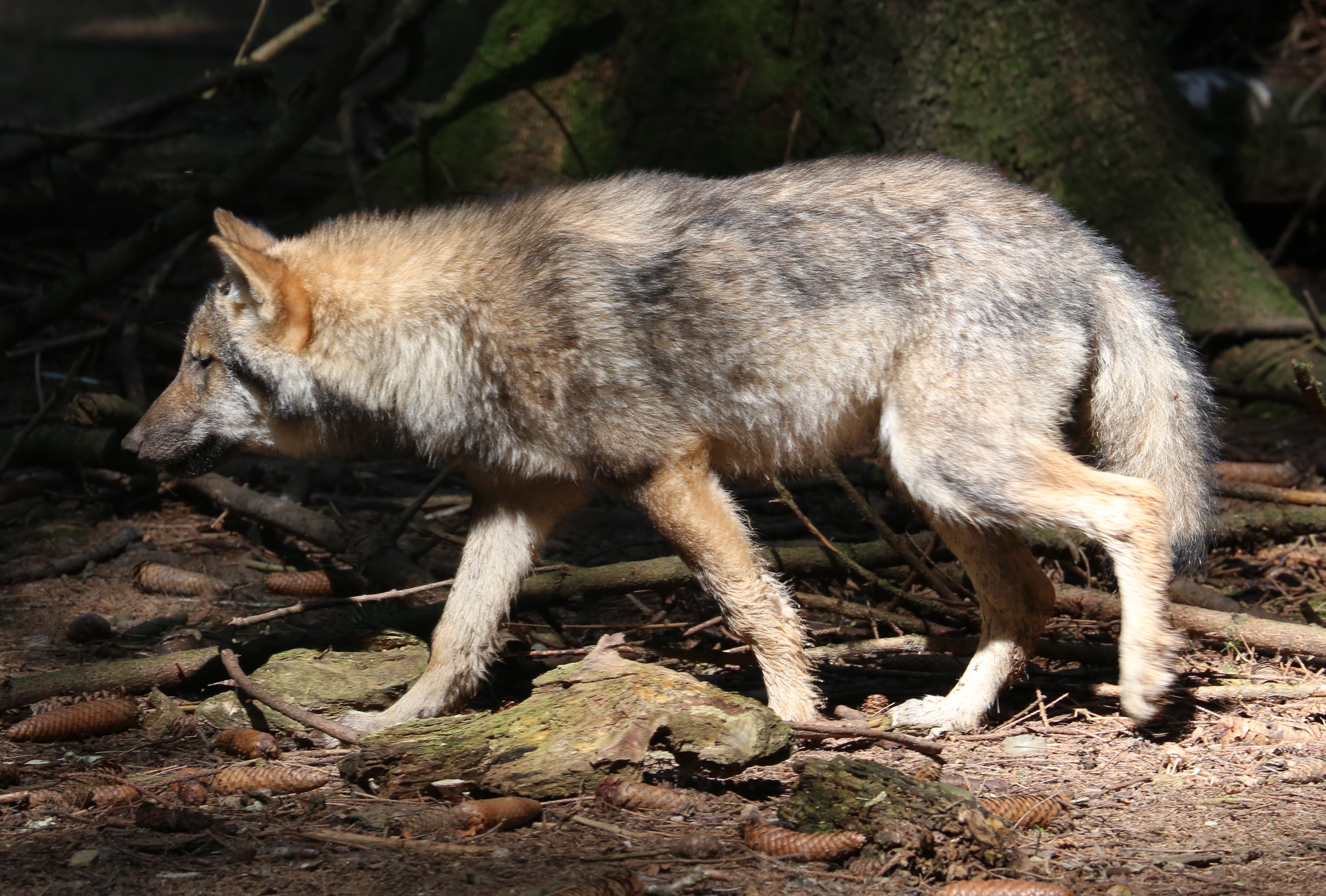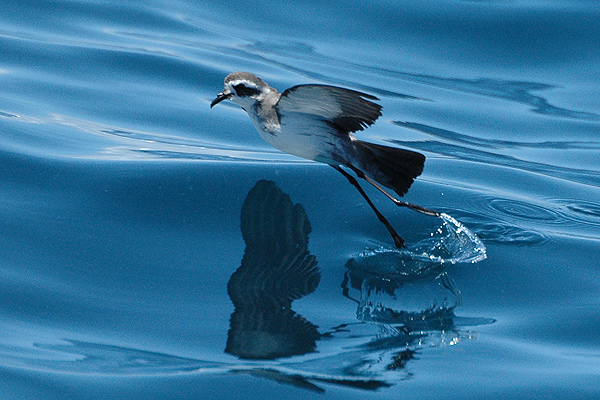|
Greater Stick-nest Rat
The greater stick-nest rat (''Leporillus conditor''), also known as the housebuilding rat and wopilkara, is a species of rodent in the family Muridae. They are about the size of a small rabbit and construct large nests of interwoven sticks. Once widespread across southern Australia, the population was reduced after European colonisation to a remnant outpost on South Australia's Franklin Islands. The species has since been reintroduced to a series of protected and monitored areas, with varying levels of success. Taxonomy A description of the species was given in a report of the explorer Charles Sturt, and published in 1848. The species was placed as genus '' Mus'', and later assigned to '' Leporillus'', and so allied to the murid family of rodents. The type was collected in vegetation on the Darling River, around 45 miles from Laidley Ponds, the disposition of this specimen is unknown. Description The species has a broad and short head, with wide and rounded ears. The length of ... [...More Info...] [...Related Items...] OR: [Wikipedia] [Google] [Baidu] |
Rodent
Rodents (from Latin , 'to gnaw') are mammals of the Order (biology), order Rodentia ( ), which are characterized by a single pair of continuously growing incisors in each of the upper and Mandible, lower jaws. About 40% of all mammal species are rodents. They are native to all major land masses except for Antarctica, and several oceanic islands, though they have subsequently been introduced to most of these land masses by human activity. Rodents are extremely diverse in their ecology and lifestyles and can be found in almost every terrestrial habitat, including human-made environments. Species can be arboreal, fossorial (burrowing), saltatorial/ricochetal (leaping on their hind legs), or semiaquatic. However, all rodents share several morphological features, including having only a single upper and lower pair of ever-growing incisors. Well-known rodents include Mouse, mice, rats, squirrels, prairie dogs, porcupines, beavers, Cavia, guinea pigs, and hamsters. Once included wi ... [...More Info...] [...Related Items...] OR: [Wikipedia] [Google] [Baidu] |
Murray–Darling Basin
The Murray–Darling Basin is a large geographical area in the interior of southeastern Australia, encompassing the drainage basin of the tributaries of the Murray River, Australia's longest river, and the Darling River, a right tributary of the Murray and Australia's third-longest river. The Basin, which includes six of Australia's seven longest rivers and covers around one-seventh of the Australian landmass, is one of the country's most significant agricultural areas providing one-third of Australia's food supply. Located west of the Great Dividing Range, it drains southwest into the Great Australian Bight and spans most of the states of New South Wales and Victoria, the Australian Capital Territory, and parts of the states of Queensland (the lower third) and South Australia (the southeastern corner). The Basin is in length, with the Murray River being long. Most of the basin is flat, low-lying and far inland, and receives little direct rainfall. The many rivers it ... [...More Info...] [...Related Items...] OR: [Wikipedia] [Google] [Baidu] |
Local Extinction
Local extinction, also extirpation, is the termination of a species (or other taxon) in a chosen geographic area of study, though it still exists elsewhere. Local extinctions are contrasted with extinction, global extinctions. Local extinctions mark a change in the ecology of an area. It has sometimes been followed by a replacement of the species taken from other locations, such as with wolf reintroduction. Discussion Glacial period, Glaciation is one factor that leads to local extinction. This was the case during the Quaternary glaciation, Pleistocene glaciation event in North America. During this period, most of the native North American species of earthworm were killed in places covered by glaciation. This left them open for colonization by European earthworms brought over in soil from Europe. Species naturally become extinct from islands over time; this can be either local extinction if the species also occurs elsewhere, or in cases of endemism, island endemism, outright ex ... [...More Info...] [...Related Items...] OR: [Wikipedia] [Google] [Baidu] |
Roxby Downs, South Australia
Roxby Downs is a town and locality in the Australian state of South Australia about north of the state capital of Adelaide. The town has a highly transient population of around 4,000 people. Roxby Downs has many leisure and community facilities including swimming, cinema, cultural precinct, community radio, shopping centre, schools, TAFE, cafes and sporting clubs and facilities. There are just two neighbouring towns in the area: Andamooka, an opal mining town about 30 km to the east, and Woomera, 84 km south of Roxby Downs. Andamooka people call the town home, and many are of European background since the days of early opal mining. History The town of Roxby Downs was built in 1986-88 (land survey commenced in November 1986) with the aim of servicing the Olympic Dam mine and processing plant, located north of the site of the town. Roxby Downs was officially opened on 5 November 1988. The opening was celebrated with a "town party" held on the main oval and s ... [...More Info...] [...Related Items...] OR: [Wikipedia] [Google] [Baidu] |
Salutation Island
A salutation is a greeting used in a letter or other communication. Salutations can be formal or informal. The most common form of salutation in an English letter includes the recipient's given name or title. For each style of salutation there is an accompanying style of complimentary close, known as valediction. Examples of non-written salutations are bowing (common in Japan), waving, or even addressing somebody by their name. A salutation can be interpreted as a form of a signal in which the receiver of the salutation is being acknowledged, respected or thanked. Another simple but very common example of a salutation is a military salute. By saluting another rank, that person is signalling or showing his or her acknowledgement of the importance or significance of that person and his or her rank. Some greetings are considered vulgar, others "rude" and others "polite". Usage The salutation "Dear" in combination with a name or a title is by far the most commonly used salutation in ... [...More Info...] [...Related Items...] OR: [Wikipedia] [Google] [Baidu] |
St Peter Island (South Australia)
St Peter Island (originally in Dutch: ''Eyland St. Pierre'') is an island in the Nuyts Archipelago on the west coast of Eyre Peninsula in South Australia near Ceduna. It is the second largest island in South Australia and about long. It was one of the first parts of South Australia to be discovered and named by Europeans, along with St Francis Island, mapped by François Thijssen in 't Gulden Zeepaert in 1627. Seal hunting took place on the island in the 1820s and 1830s. Archaeological investigations have also located whale vertebra at the site. The historic St Peter Island Whaling Sites are listed on the South Australian Heritage Register as a designated place of archaeological significance. Protected area status Statutory reserves The island is part of the Nuyts Archipelago Conservation Park while the waters surrounding its shores are in the Nuyts Archipelago Marine Park. Non-statutory arrangements Important Bird Area The island is part of the Nuyts Archipelago Impo ... [...More Info...] [...Related Items...] OR: [Wikipedia] [Google] [Baidu] |
Nuyts Archipelago
The Nuyts Archipelago is an island group in South Australia in the Great Australian Bight, to the south of the town of Ceduna on the west coast of the Eyre Peninsula. It consists of mostly granitic islands and reefs that provide breeding sites for Australian sea lions and support colonies of short-tailed shearwater. It also includes the island group known as the Isles of St Francis. All the islands, with the exception of a part of Evans Island, are located within the protected areas of the Nuyts Archipelago Wilderness Protection Area and the Nuyts Archipelago Conservation Park. Description Of the roughly 30 islands and reefs in the archipelago, those lying furthest from the coast of the Eyre Peninsula are the Isles of St Francis, after the largest. Most of the islands are formed of calcarenite lying on granite; where the softer calcarenite is close to sea level it has been heavily eroded by wave action. The area is biologically unique in South Australia due to the in ... [...More Info...] [...Related Items...] OR: [Wikipedia] [Google] [Baidu] |
Epizootic
In epizoology, an epizootic (or epizoötic, from Greek: ''epi-'' "upon" + ''zoon'' "animal") is a disease event in a nonhuman animal population analogous to an epidemic in humans. An epizootic disease (or ) may occur in a specific locale (an " outbreak"), more generally (an "epizootic"), or become widespread (" panzootic"). High population density is a major contributing factor to epizootics. The aquaculture industry is sometimes plagued by disease because of the large number of fish confined to a small area. Defining and declaring an epizootic can be subjective; health authorities evaluate the number of new cases in a given animal population during a given period, and estimate a rate of spread that substantially exceeds what they might expect based on recent experience (''i.e.'' a sharp elevation in the incidence rate). Because the judgement is based on what is "expected" or thought normal, a few cases of a very rare disease (like a transmissible spongiform encephalop ... [...More Info...] [...Related Items...] OR: [Wikipedia] [Google] [Baidu] |
Cats In Australia
Cats (''Felis catus''), initially introduced into Australia with the First Fleet in 1788, now number more than 11 million distributed across more than 90% of the continent including every major island. They are the second most popular pet by household (third most populous overall after pet dog, dogs and pet fish, fish). In 2023 there were 5.3 million kept as pets of which approximately 95% are Neutering, neutered. In addition there are estimated to be up to 6 million feral cats found in almost every remote area across the country. Cats are considered by the CSIRO to be the most damaging invasive species in Australia, invasive pest by cost [...More Info...] [...Related Items...] OR: [Wikipedia] [Google] [Baidu] |
Red Fox
The red fox (''Vulpes vulpes'') is the largest of the true foxes and one of the most widely distributed members of the order Carnivora, being present across the entire Northern Hemisphere including most of North America, Europe and Asia, plus parts of North Africa. It is listed as least concern on the IUCN Red List. Its range has increased alongside human expansion, having been Foxes in Australia, introduced to Australia, where it is considered harmful to native small and medium-sized rodents and marsupials. Due to its impact on native species, it is included on the list of the "List of the world's 100 worst invasive species, world's 100 worst invasive species". The red fox originated in Eurasia during the Middle Pleistocene at least 400,000 years ago and later colonised North America sometime prior to 130,000 years ago. Among the true foxes, the red fox represents a more progressive form in the direction of Carnivore, carnivory. Apart from its large size, the red fox is distin ... [...More Info...] [...Related Items...] OR: [Wikipedia] [Google] [Baidu] |
Rabbits In Australia
European rabbits (''Oryctolagus cuniculus'') were first introduced to Australia in the 18th century with the First Fleet, and later became widespread, because of Thomas Austin. Such wild rabbit populations are a serious mammalian pest and invasive species in Australia causing millions of dollars' worth of damage to crops. Their spread may have been enhanced through the emergence of strong crossbreeds. Various methods in the 20th century have been attempted to control the Australian rabbit population. Conventional methods include shooting rabbits and destroying their warrens, but these had only limited success. From 1901 to 1907, a rabbit-proof fence was built in Western Australia in an unsuccessful attempt to contain the rabbits. The'' myxoma virus'', which causes myxomatosis, was introduced into the rabbit population in the 1950s and had the effect of severely reducing the rabbit population. However, the survivors have since adapted and partially recovered their previous nu ... [...More Info...] [...Related Items...] OR: [Wikipedia] [Google] [Baidu] |






